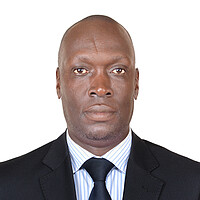How Uganda's schoolchildren became the keepers of the vine
Loading...
| Kitagobwa, Uganda
Joan Nabadda’s school days in Kitagobwa are filled with reading, writing, and sweet potatoes.
The 7th-grader is one of 11,200 students in Uganda being trained as evangelists for improved strains of kipaapali, as the orange-fleshed tubers are known locally.
The sweet potato has always been an important crop in Uganda. The East African nation is the leading producer of sweet potatoes in Africa and second to China in the world. In recent years however, the root vegetable has taken on heightened significance as a means of mitigating malnutrition, food insecurity, and poverty. New strains of the crop, developed by the National Crops Resources Research Institute (NaCRRI) in Namulonge, promise fortified nutritional value, increased drought tolerance, and higher yields.
Why We Wrote This
In a nation where a majority relies on subsistence farming, improved crop strains can make a big difference. But getting fortified seedlings into the hands of farmers can require its own kind of revolutionary thinking.
Distributing these new strains to the region’s far-flung small-scale farmers, the majority of whom are not connected to formal agricultural networks, has been a challenge. With limited number of government extension workers to distribute the vines, the government has relied on NGOs to educate farmers about growing practices. But those efforts have been sporadic, and adoption of these new varieties has been low.
In the past few years, however, NaCRRI has recruited school children like Joan to not only distribute these improved crops, but to teach their families as well.
In addition to their academic studies, students in 56 schools in the districts of Wakiso, Mukono, and Kamuli receive training in vine preservation, sweet potato agronomy, and disease identification and management, says Gorettie Semakula, a research scientist at NaCRRI and the team leader for the program in Uganda.
“The model was 10 times more successful than the other models,” says Dr. Semakula.
In the first three years of the project, Ugandan school children distributed close to 22 million vines in the districts of Wakiso, Mukono, and Kamuli. A companion program in Tanzania has distributed 50 million sweet potato vines in the same period, says Dr. Kiddo Mtunda, the program’s lead scientist in Tanzania.
The program has caught the eye of other scientists at NaCRRI. Dr. Stanley Nkalubo, who runs the institute's Legumes Research Program, has started deploying school children to distribute drought-tolerant and fortified bean seeds and to train farmers on growing practices. And Semakula has been talking with the NaCRRI's parent organization, the National Agricultural Research Organisation, about scaling up the program.
By teaching children to bring what they are learning at school home to their families, researchers have been able to reach areas that they otherwise may not have been able to, says Semakula. Nearly every village in Uganda has a primary school, and most families have at least one school-age child.
The model has not only enabled more efficient seedling delivery, it has also made distribution more equitable, says Grace Babirye, program director at Volunteers Effort For Development Concern Uganda, one of the collaborating NGOs engaged in agricultural extensions. In other programs, beneficiaries were likely to be friends or colleagues of extension workers.
Sending children as the messenger ensures that farmers are introduced to these new varieties from someone they trust and who will be around throughout the growing season, rather than a government worker who arrives for one day and never returns.
“Whatever you tell children, they take the message to the parents,” Ms. Babirye says. “[M]others listen to their children.”
In Kitagobwa, a village in Uganda’s Wakiso district, that idea is evident.
Joan was one of the first students at Kitagobwa Primary School to join the program. She was particularly interested in the new strain’s resistance to drought, an increasing problem in Wakiso.
“I was enthusiastic about learning about the new techniques of growing sweet potatoes, as we usually eat them during times of scarcity,” Joan says. “I was also interested in any skills that would help me improve on our income at home.”
By the time Joan brought vines home to her family she had gained hands-on knowledge of basic sweet potato agronomy, from planting to weeding to harvesting. She learned the art of hilling, the gathering of loose soil around the base of the plant as it grows to promote growth of the fleshy tubers beneath the soil.
Impressed by what her niece was learning, Joan’s aunt, Deziranta Nakisozi, accepted an invitation to visit the school to learn for herself. She had never before received any formal agricultural training.
Gesticulating toward the hilled mounds of earth around her, Ms. Nakisozi boasts, “Kipaapali yielded very well.”
Her neighbor in the field, Rebecca Nakakawa, has seen similar success since her daughter brought home kipaapali vines from school.
“The yields from the kipaapali are much better than our traditional variety,” she says.






